

Analytical Modelling of T-Shaped Monolithic & Independent RCC Buildings
Inder Khandelwal1 , Dr. A. R. Gupta2
1 M.E Student, Department of Structural Engineering, College of Engineering and Technology Akola, India

2 Guide, Department of Structural Engineering, College of Engineering and Technology Akola, India Sant Gadge Baba Amravati University
Abstract: During an earthquake the behaviour of the building depends on its overall shape, size & geometry. Now a day’s many buildings are asymmetric in plan and elevation because everyone wants to win the race of aesthetically beautiful and complex structures. Due to irregular distribution of mass, stiffness and strength, it may cause serious damage in structural system. There are various types of irregularities in the buildings depending upon their location and scope. Mainly two types of irregularities as per IS 1893 (Part 1) 2002. are a) plan or horizontal irregularities b) vertical irregularities. Irregularity in structure makes analysis of the seismic behaviour very complicated. The objective of present study is to analyze and compare the behaviour of T shape monolithic and independent RCC structure under seismic loading. The comparison of both structures is studied by calculating, finding and tabulating comparative values of displacement, base moments and shear values. The study reflects that with change in structure i.e. the behaviour of structure towards earthquake changes, nodal displacement, moment, and base shear values shows drastic changes towards resistivity against seismic forces. The soft computing tool and commercial software STAAD-Pro is used for modelling and analysis also the study done over here thus helps to understand effect of earthquake on both structures for achieving stable and safe structure.
Keywords: Seismic, RCC structures, Asymmetric structures, IS 1893 (Part 1) 2002, Base Shear, Nodal displacement, Support Reactions, Shear Force
I. INTRODUCTION
Earthquakes are may be the most unpredictable and disturbing of all natural disasters. They not only cause great damage in terms of human loss in numerical strength through a cause, as a death, but also have a great cost effective impact on affected vicinity. An earthquake is a sudden movement of the earth’s crust, which originate naturally at or below the surface, because of release of strain energy or movement of tectonic plates. Due to development of concentration currents, the plates move apparently towards each other or away from each other. This movement of the surface develops inertia forces on the structural lines over it. This causes damage to or collapse of buildings and other man made structures. Experience has shown that for new constructions, establishing earthquake resistant regulations and their implementation is the critical safeguard against earthquake induced damage. As regards existing structures, it is necessary to evaluate and strengthen them based on evaluation criteria before an earthquake. Earthquake damage depends on many parameters, including intensity, duration and frequency content of ground motion, geologic and soil condition, quality of construction, symmetry of structure etc. Out of all the factors asymmetry can be the most important reason for a building’s poor performance under severe seismic loading. Buildings may be considered as asymmetric in plan or in elevation based on the distribution of mass and stiffness along each storey, throughout the height of the buildings. Seismic behavior of asymmetric building may cause interruption of force flow and stress concentration. Due to this, there is produce of torsion in the building which leads to increase in shear force, lateral deflection and ultimately causes failure. The buildings with vertical setbacks and L, H, U or T shaped in plans which built as unit are more affected during seismic event. Therefore, building design must be such as to ensure that the building has adequate strength, high ductility, and will remain as one unit, even while subjected to very large deformation, so that we need to provide earthquake resistive building.
II. LITERATUREREVIEW
Donthireddy Raja Shekar Reddy. et. al. (1), In this study, multi store building with G+14 storey’s are analyzed for storey drift story displacement and base shear using ETABS software. The analysis of this building is done for seismic loading with all Zones (Zone II, III, and IV & V). The analysis of these building is done by using dynamic method (Response spectrum analysis).. Extensive research has been done in the design and analysis of shear wall in high rise buildings. However, significance of shear wall in high rise irregular or unsymmetrical structures is not much discussed in this literature.
Science
Engineering Technology (IJRASET)
ISSN: 2321 9653; IC Value: 45.98; SJ Impact Factor: 7.538

Volume 10 Issue IX Sep 2022 Available at www.ijraset.com
Abhay Guleria. et. al. (2), This paper shows the case study and mainly emphasizes structural behavior of multi storey building for different plan configurations like rectangular, C, L and I shape. In this paper modeling of 15 storey R.C.C. framed building is done on the ETABS software for analysis. Post analysis of the structure, maximum shear forces, bending moments, and maximum storey displacement are computed and then compared for all the analyzed cases.
MANISH KUMAR GUPTA. et.al.(3), In this paper, the dynamic analysis of a multi storey building is done and it has been modeled with different structural elements for minimum story displacement. The dynamic analysis of multi storey buildings is done using Etabs 2015 by IS and SP codal provisions (ETABS User’s Manual, 2015). The multi storey building is R.C.C. structure with G+ 14 upper floors in zone IV.
III. DETAILSTUDY
Structures are generally made up of a combination of flexible and stiff parts. This ensures that the seismic energy passed on to the structure is first absorbed in the flexible part and then gets transferred onto the stiff part. During an earthquake, the columns of the structures act as primary members which resist the seismic forces, owing to this fact it is seen that the use of corrosion resistant hybrid columns in Reinforced Concrete (RC) structures can reduce the residual displacement and also have enough energy dissipation capacity during earthquake excitations. It is also seen that in areas of high seismic risk RC wall frame structures are constructed as it provides stiffness to the system’s lateral force resistance, and also behave as ductile structures.
A earthquake resistive structure having properties of RCC materials. So, it is necessary to study the structure under the effect of seismic forces. The study is concerned with the right analysis for the structures and looking after the construction process so that the longevity of the earthquake resistive structures is guaranteed after construction. Construction technique for structure should also be satisfactory for the public terms of comfort. The primary design technologies are to control or remediate earthquake effects.
Thus, the various parameters like displacement, storey drift, reactions and shear forces are studied and compared.
1) The present study is limited to RCC framed structure.
2) Framed structure with T shape & G+4 storeys is considered.
3) Soil structure interaction effects are not considered in the present study.
The various parameters used in the seismic analysis of RCC framed structure, are considered from IS 1893: 2002, “Code for earthquake resistant design of structures general provisions for buildings, Part I, Bureau of Indian Standards.
A. Model Formulation
The study is disbursed on a T shape monolithic and independent building. The plan layout of the building is shown within the figure. The building is taken into account as residential building having G+4. Height of every storey is kept same as other prevalent data.
B. Method Adopted
1) Step 1: Parameters of beam and column sections
codes IS 456 2000 and IS 800 2007 are used for RCC and Steel section. The RCC beam and column sections provided are 0.23m x 0.45m and 0.23m x 0.6m resp. A structural model is a diagram which consists of a set of nodes and connections between the nodes. Analysis process of frames is conducted on a model based on many assumptions including those for the structural model, the geometric behavior of the structure and its members and the behaviour of the sections and joints.
2) Step 2: Analysis: Each type of frame is analyzed separately by using STAAD.Pro V8i .The analysis is conducted for IS 1893(Part 1), 2002 and IS 800 2007 specified combinations of loadings.
3) Step 3: Comparison of Results: The results will be obtained by seismic analysis and are compared in terms mentioned below for monolithic T shape RCC framed and independent T shape RCC frame.
displacement in longitudinal and transverse direction.
drift in longitudinal and transverse direction
at the bottom supports of edge sections
forces i.e. Axial forces, Shear forces and Bending moments in all directions.
displacements in edge nodes for RCC section.
forces induced in top edge column.
forces induced in top edge beam
CASECONSIDERATION
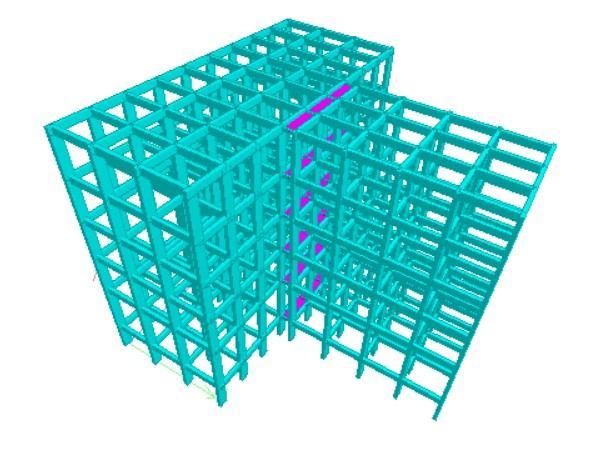
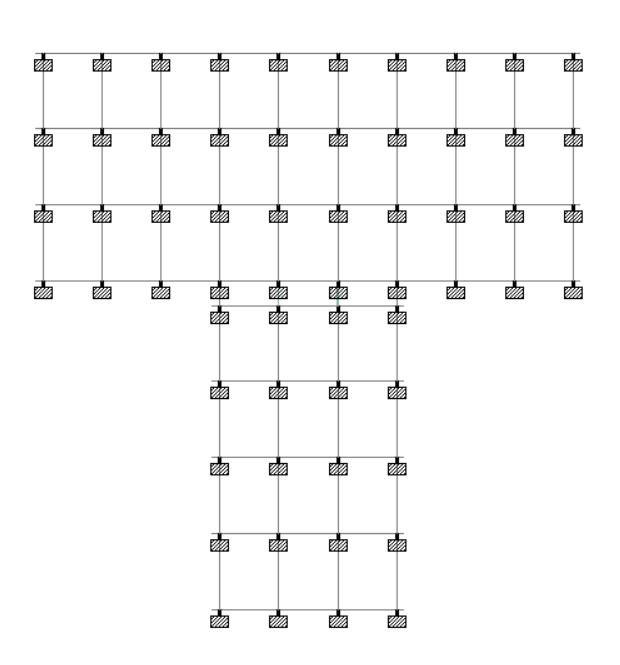
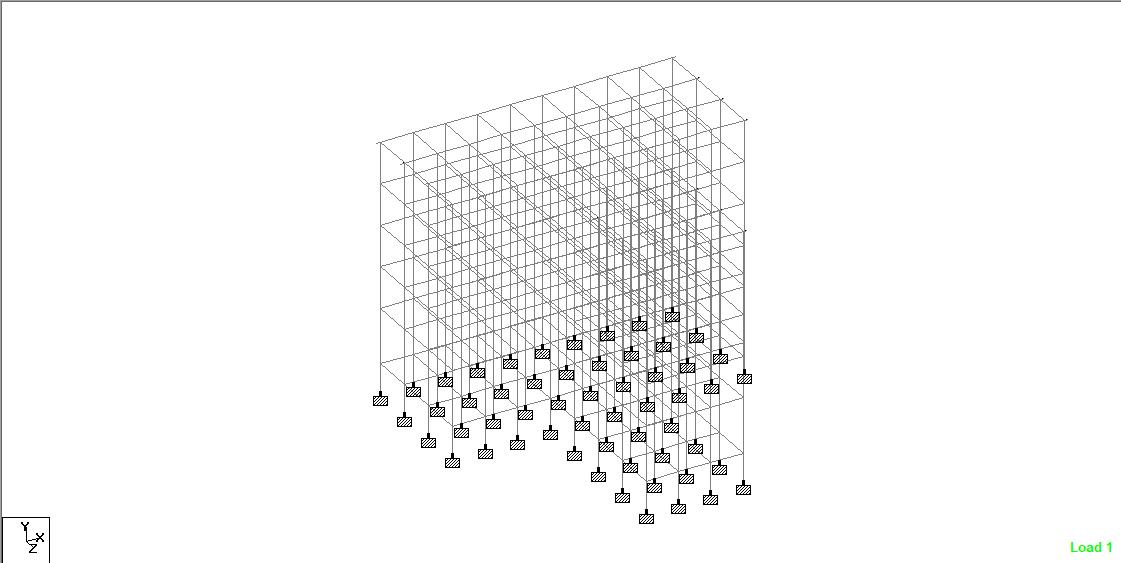
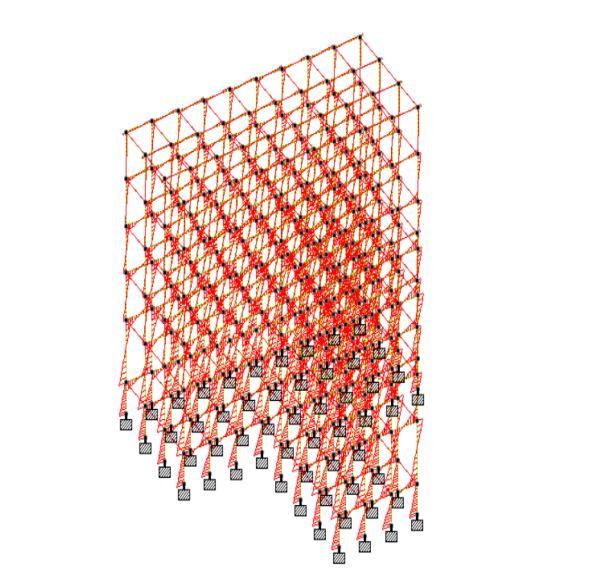
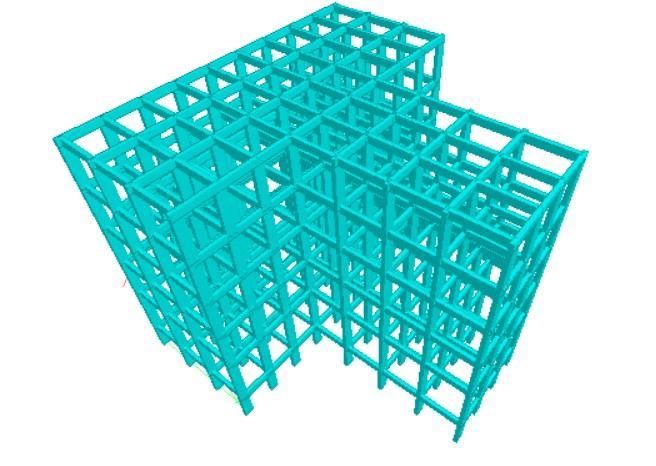
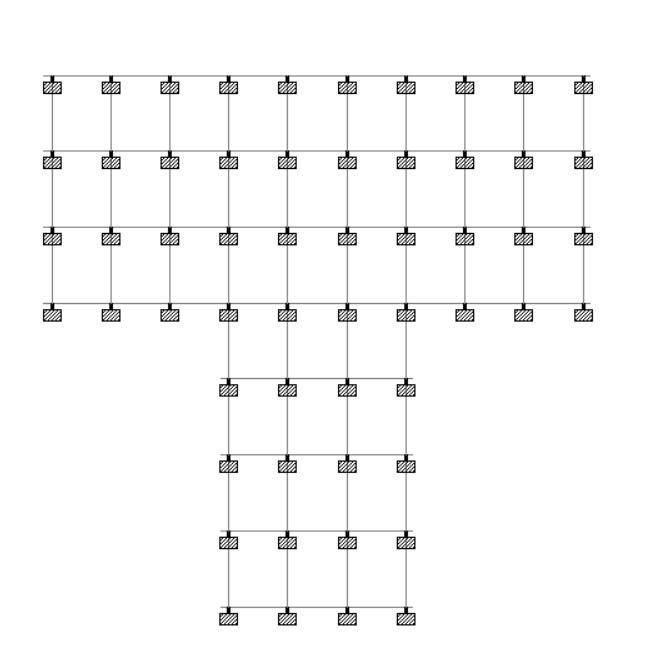

V. OBSERVATION
2
68.65
63.71
54.61
43.17
30.08
RESULTANT
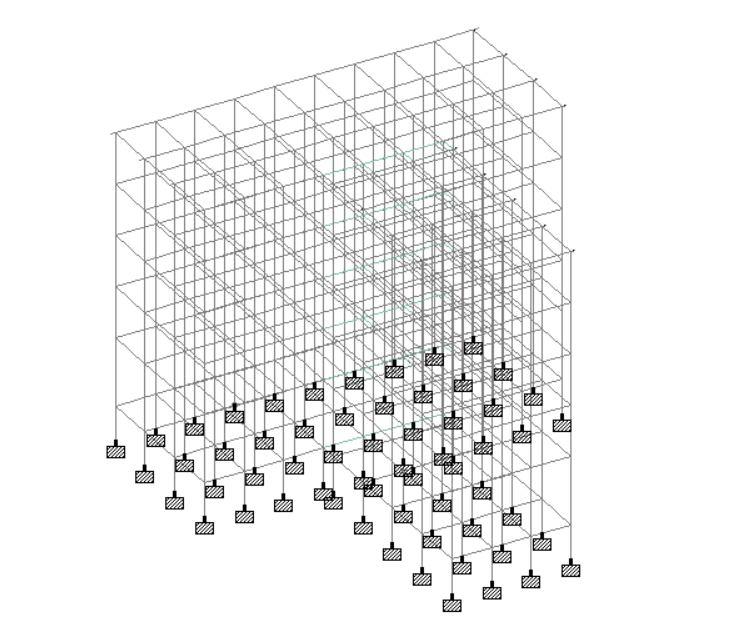
2
64.8
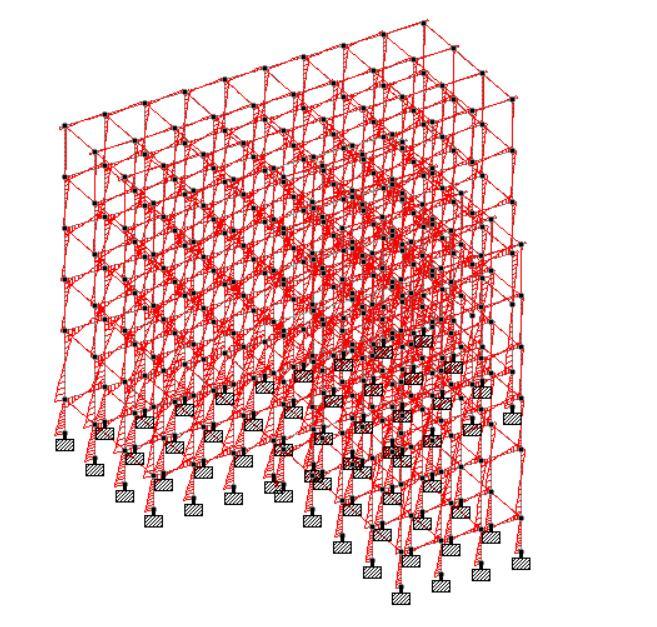
59.9
51.62
41.02
28.83

2321 9653; IC Value: 45.98;
Issue
Sep
Impact Factor:

at www.ijraset.com
NO.
NODE NO.
1
79.6 64.324
73.93 59.07
63.92 51.56
50.87 40.8
35.88 28.8
4.69 3.72
2
CASE I
DISPLACEMENT
80.22
74.35 5.87
64.05 10.3
50.82 13.23
35.5 15.32
4.7 30.8
II
NO. RESULTANT DISPLACEMENT
68.65
63.71 4.94
54.61 9.1
43.17 11.44
30.08 13.09
26.1
CASE I
NODE NO. RESULTANT DISPLACEMENT
79.81
74.11 5.7
63.9 10.21
50.89 13.01
35.84 15.05
4.7 31.14
ISSN: 2321 9653; IC Value: 45.98; SJ Impact Factor: 7.538 Volume 10 Issue IX Sep 2022 Available at www.ijraset.com
CASE II
NODE NO. RESULTANT DISPLACEMENT 274 64.8 264 59.9 4.9 254 51.62 8.28 244 41.02 10.6 234 28.83 12.19 224 3.75 25.08
F. Storey Drift Values at Inner Edge
CASE I
NODE NO. RESULTANT DISPLACEMENT 275 79.6 265 73.93 5.67 255 63.92 10.01 245 50.87 13.05 235 35.88 14.99 225 4.69 31.19
CASE II
NODE NO. RESULTANT DISPLACEMENT 275 64.324 265 59.07 5.25 255 51.56 7.51 245 40.8 10.76 235 28.8 12 225 3.72 25.08
VI. CONCLUSION
With the aim of comparing the behaviour of both monolithic and independent T shape RCC structure under seismic loading, various cases are analysed and the comparison is made related to nodal displacement, support reaction and storey drift value. On the basis of this analysis the observation are made. It is observed that the nodal displacement, shear values reactions as well as drift values are more for the T shape structure which is monolithically constructed while the same structure is provided in the form of two rectangles to form T shape. There is drastic fall in values of forces, reactions, displacement, and drift. From the study, analysis and comparison it can be handled in good way if it is provided in the independent rectangle arrangement.
REFERENCES
[1] Sabahat J Ansari. “ Comparative study of symmetric and asymmetric L shape & T shape multi storey frame building subjected to gravity and seismic loads with varying stiffness”. IJSTE vol.2 April 2016.
[2] Nzapfakumunsi Alexis “ Seismic design evaluation of T shape irregular RC building plans by using pushover analysis”. Published in 2nd International symposium on Natural Hazards and disaster management 06 May 2018.
[3] Mohd. Abdul Aqib Farhan. “seismic analysis of multi storyed RCC buildings regular and irregular in plan”. IJERT vol 8 November 2019.
[4] Mohit Sharma and Dr. Savita Maru, Performance based seismic design and pushover analysis: a review, IJOER, Vol.2, Issue.5, 2014.
[5] Mohit Sharma, Dr. Savita Maru, “ Dynamic Analysis of Multistoried Regular Building” IOSR Journal of Mechanical and Civil Engineering (IOSR JMCE) e ISSN: 2278 1684,p ISSN: 2320 334X, Volume 11, Issue 1 Ver. II (Jan. 2014), PP 37 42.
[6] Himanshu Bansal, Gagandeep, “Seismic Analysis and Design of Vertically Irregular RC Building Frames” International Journal of Science and Research (IJSR) ISSN (Online): 2319 7064, Impact Factor (2012).

[7] Jack P. Moehle(1983) “Seismic response of vertically irregular structure” Journalof Structural Engineering, Vol. 110, No. 9, September, 1984. ©ASCE, ISSN 0733 9445/84/0009 2002. Paper No. 19 to 61.
[8] David vere Jones, Forecasting earthquakes and earthquake risks, International journal of forecasting, 11(1995)503 538.

